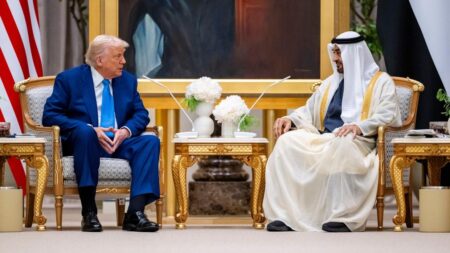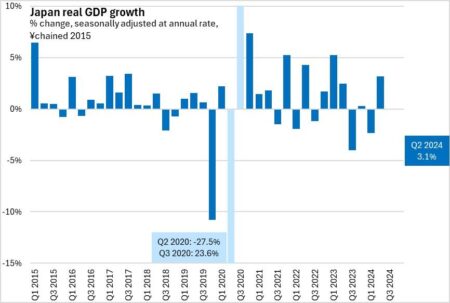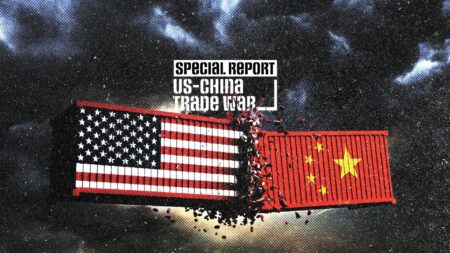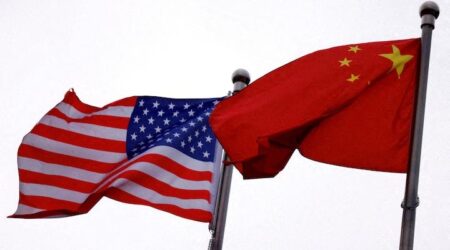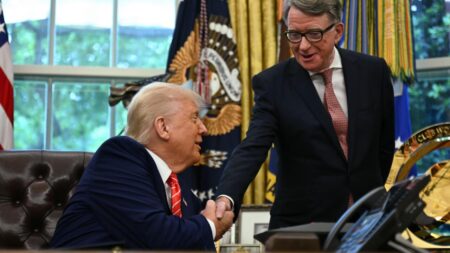Former President Trump’s recent tariff truce with China has sparked a wave of concern regarding the United States’ credibility in trade negotiations. Critics warn that by easing pressure on Beijing, the U.S. may be jeopardizing its commitment to fair trade practices and its role as a leader in the global economy.
Browsing: tariffs
Even with tools proudly stamped “Made in USA,” they aren’t shielded from the effects of tariffs. The surge in material costs and ongoing supply chain hiccups can still drive prices up. However, savvy consumers can navigate this tricky landscape by hunting for local alternatives and taking advantage of discounts, ensuring they get the best bang for their buck!
The European Union has updated its growth forecasts for Italy for 2025 and 2026, highlighting worries about falling productivity and the effects of tariffs. This revision sheds light on the persistent economic hurdles the nation is grappling with as global trade dynamics continue to shift.
North Dakota farmers are witnessing a dynamic transformation in the soybean market, fueled by changing demand and innovative production trends. However, the shadow of looming tariffs and China’s import policies casts a cloud of uncertainty, affecting both profitability and future planting choices.
China has taken a bold step by imposing tariffs on plastic imports from the US, EU, Taiwan, and Japan, citing concerns over dumping practices. This move signals a dramatic escalation in trade tensions as Beijing seeks to safeguard its domestic industry amidst the backdrop of ongoing global trade disputes
France has revealed that talks with China regarding a long-standing cognac dispute have hit a roadblock, marking a significant setback in the quest to ease trade tensions. This impasse raises alarm bells for the French spirits industry and could impact exports, leaving many wondering what the future holds for this iconic beverage.
New tariffs aimed at revitalizing American manufacturing are unexpectedly pushing businesses to seek opportunities in Canada. Companies are highlighting the allure of lower production costs and more favorable trade conditions as major reasons for their move, posing a significant challenge to U.S. policy objectives.
Firms in Guangdong are breathing a sigh of relief following a recent ‘ceasefire’ in US-China trade tensions, sparking renewed optimism for stability. Yet, as geopolitical uncertainties linger, many are shifting their focus towards diversification strategies to safeguard against potential risks.
Walmart is gearing up to raise prices on certain items, a move driven by the rising tariffs on imported goods. This announcement serves as a cautionary note for consumers, hinting at potential inflation ahead. As the retail giant maneuvers through the choppy waters of ongoing trade tensions, shoppers may feel the pinch in their wallets.
Japan’s economy has taken a surprising turn, contracting for the first time in a year and sparking worries among analysts. This unexpected downturn arrives just as looming tariff increases threaten to add more pressure on growth. Economists are sounding the alarm, suggesting that this trend could be an early warning of more significant economic hurdles on the horizon.
In a remarkable twist, China is reveling in a major trade triumph against the U.S., heralding a crucial chapter in their fierce economic rivalry. Experts are pointing to soaring exports and exciting new market opportunities, indicating a transformative shift in the landscape of global trade.
In a recent statement, former President Donald Trump revealed an exciting development: India has proposed the elimination of tariffs on U.S. goods! This bold move aims to bolster trade relations between the two nations. This revelation sheds light on the dynamic conversations surrounding international trade policies as global economic landscapes continue to evolve
Japan is growing increasingly anxious about the possible repercussions of a new US-UK trade deal on its own tariff negotiations as the election approaches. Experts caution that changes in trade dynamics could shake up Japan’s economic strategies and sway voter opinions.
As the trade war intensifies, its impact is being felt even at backyard grills nationwide. With tariffs on steel and aluminum pushing up the prices of grilling equipment and packaging, summer barbecues are becoming more expensive than ever as meat prices soar. Get ready to fire up those grills with a little extra caution this season!
In a groundbreaking move to alleviate rising trade tensions, the U.S. and China have reached an agreement to temporarily lower tariffs on a variety of goods. This pivotal decision is designed to promote economic stability and rejuvenate bilateral trade, hinting at a possible thaw in their prolonged trade war.
Honda has put the brakes on its ambitious plans for a new electric vehicle factory in Canada, as rising trade tensions and tariff disputes cast a shadow over the automotive landscape. This decision highlights the increasing uncertainty surrounding the EV market and raises questions about future investments in this rapidly evolving sector.
Japan’s Prime Minister Shigeru Ishiba has passionately renewed his call for the complete removal of tariffs between Japan and the United States, championing a stronger trade alliance. His comments emerge during pivotal discussions aimed at enhancing economic cooperation between the two nations.
Investors greeted the US-China tariff truce with enthusiasm, as the easing of trade tensions sparked a wave of optimism across global markets. Yet, analysts are sounding a note of caution, highlighting that the journey toward a comprehensive agreement is riddled with uncertainties. The ultimate outcome remains closely watched and open to interpretation.
As conversations heat up, the U.S. and U.K. are moving closer to sealing a robust trade deal. Central to these discussions are tariffs, digital trade, and agricultural standards—critical elements that both nations are eager to enhance in order to fortify their economic partnership in the wake of Brexit.
Border towns between the US and Canada are grappling with tough economic hurdles as the lasting effects of Trump’s trade war continue to ripple through their communities. Local businesses, once thriving on cross-border traffic, are now witnessing a sharp decline in customers and facing soaring tariffs, resulting in considerable financial strain.

